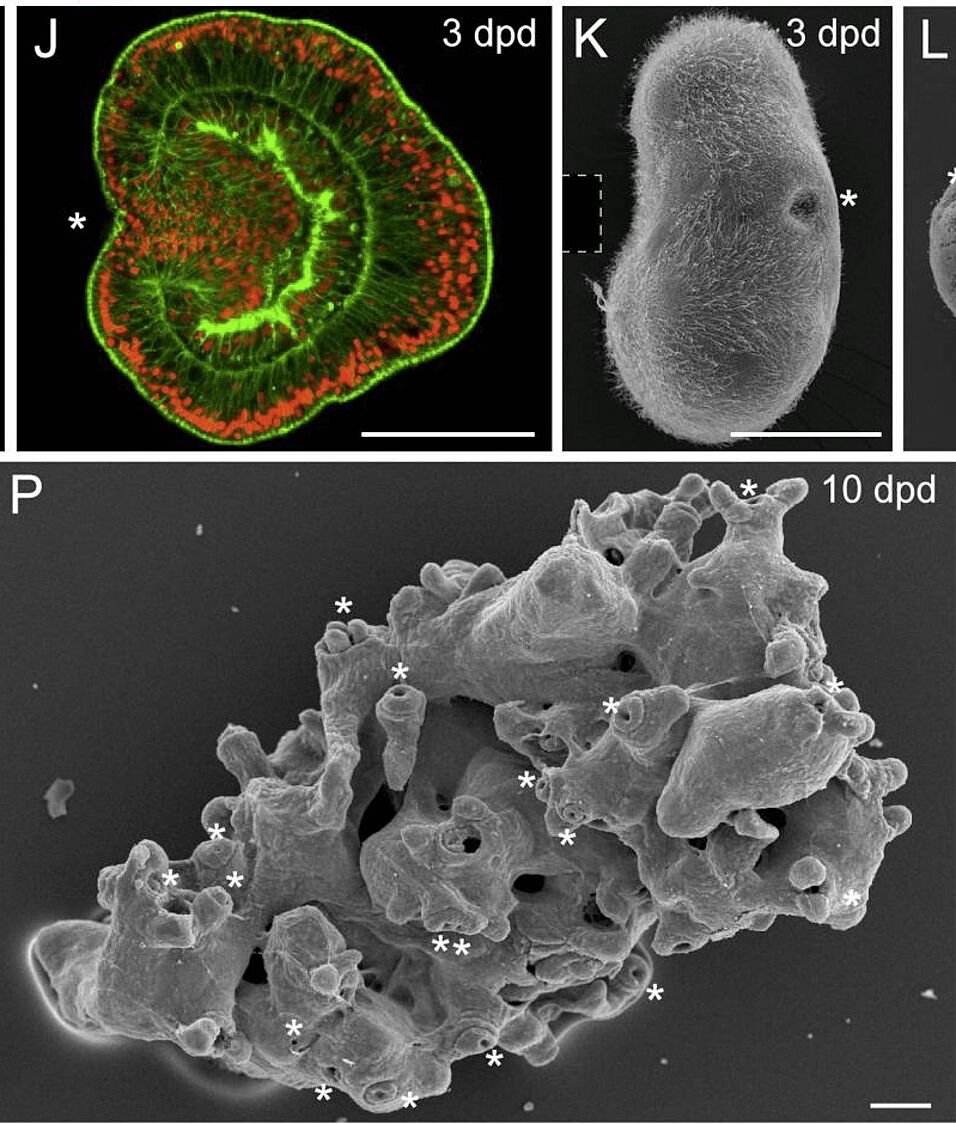Robust morphogenetic events are pivotal for animal embryogenesis. However, comparison of the modes of development of different members of a phylum suggests that the spectrum of developmental trajectories accessible for a species might be far broader than can be concluded from the observation of normal development. Here, by using a combination of microsurgery and transgenic reporter gene expression, we show that, facing a new developmental context, the aggregates of dissociated embryonic cells of the sea anemone Nematostella vectensis take an alternative developmental trajectory. The self-organizing aggregates rely on Wnt signals produced by the cells of the original blastopore lip organizer to form body axes but employ morphogenetic events typical for normal development of distantly related cnidarians to re-establish the germ layers. The reaggregated cells show enormous plasticity including the capacity of the ectodermal cells to convert into endoderm. Our results suggest that new developmental trajectories may evolve relatively easily when highly plastic embryonic cells face new constraints.
For more information, clicke here

